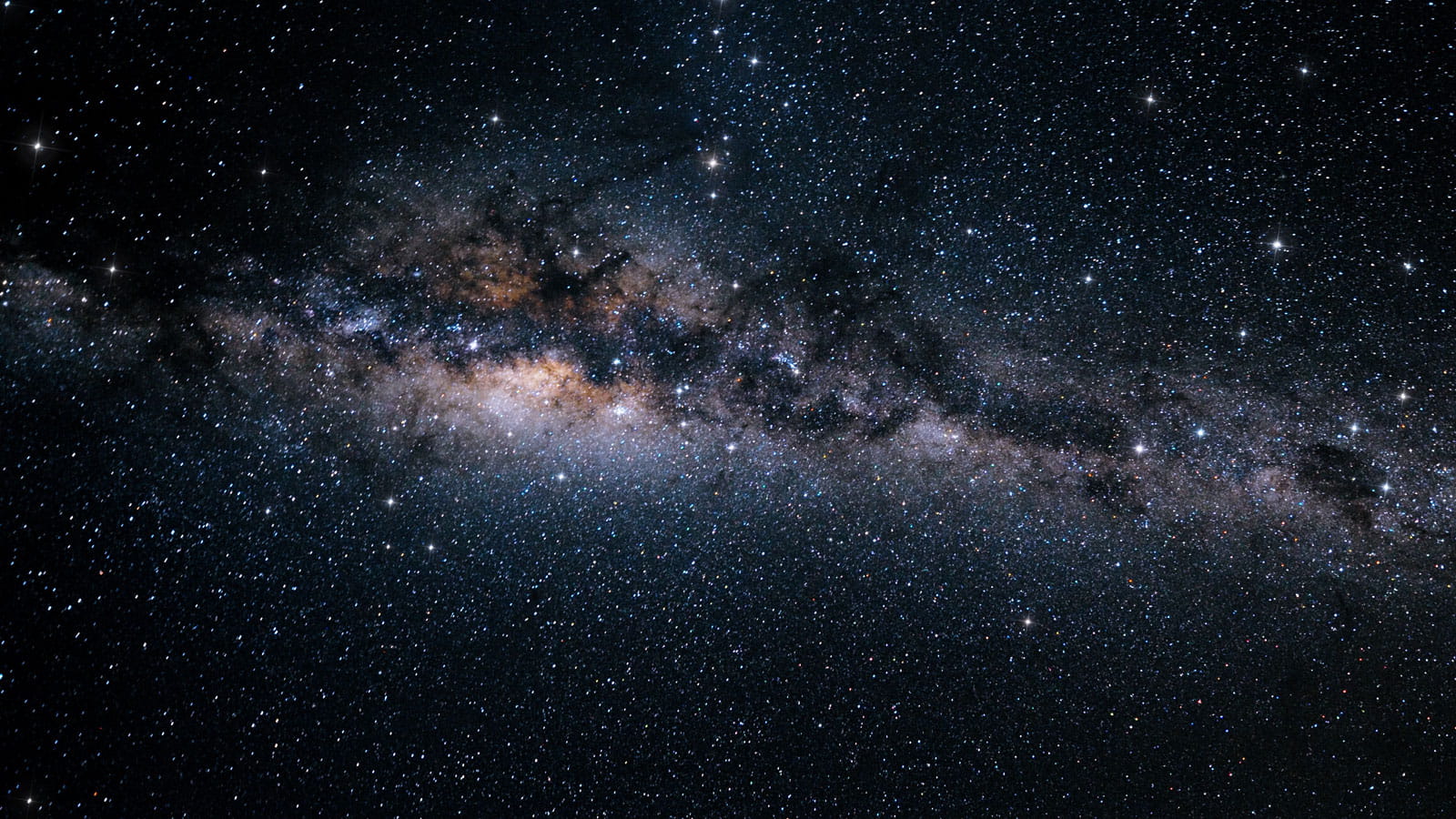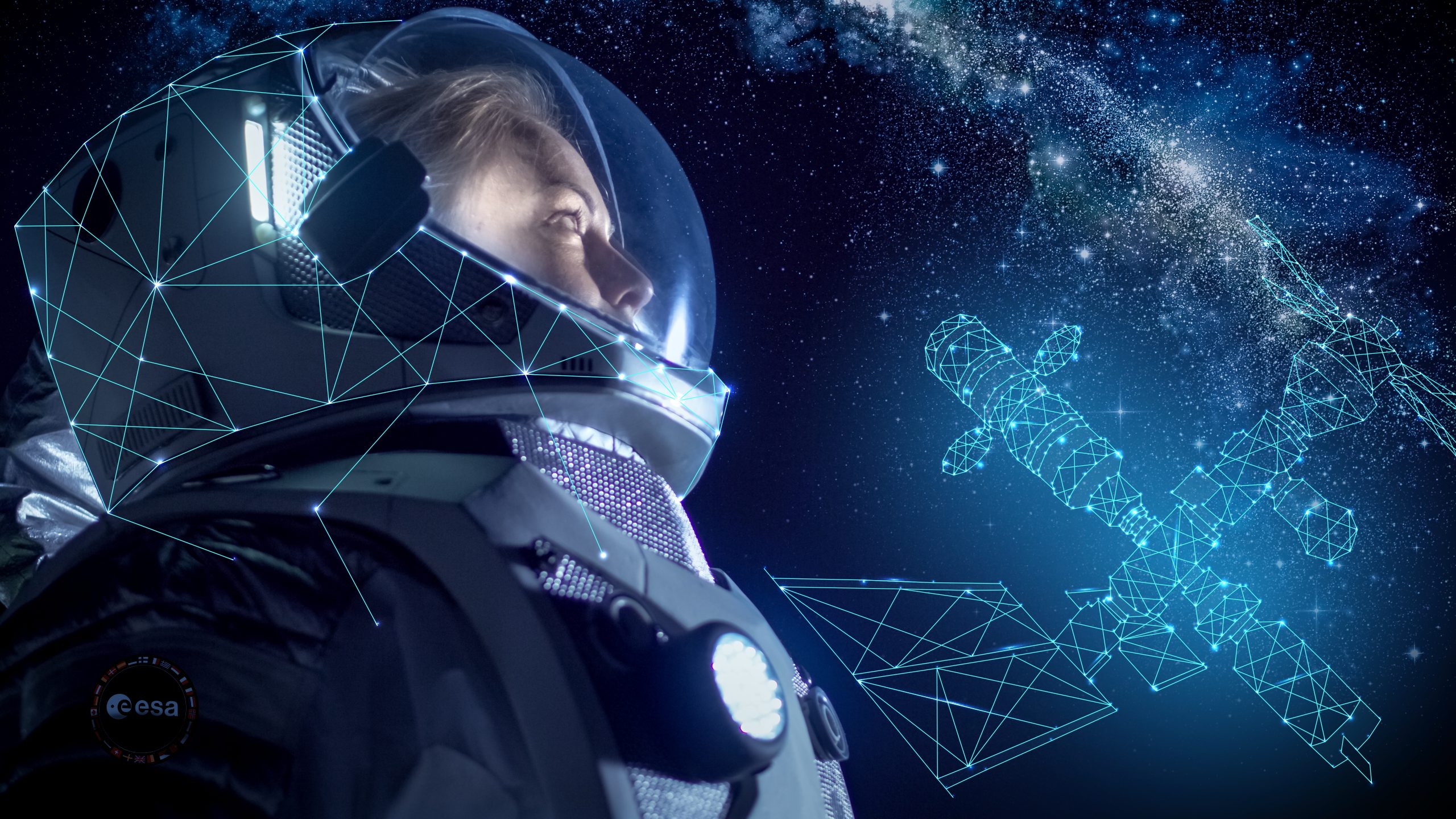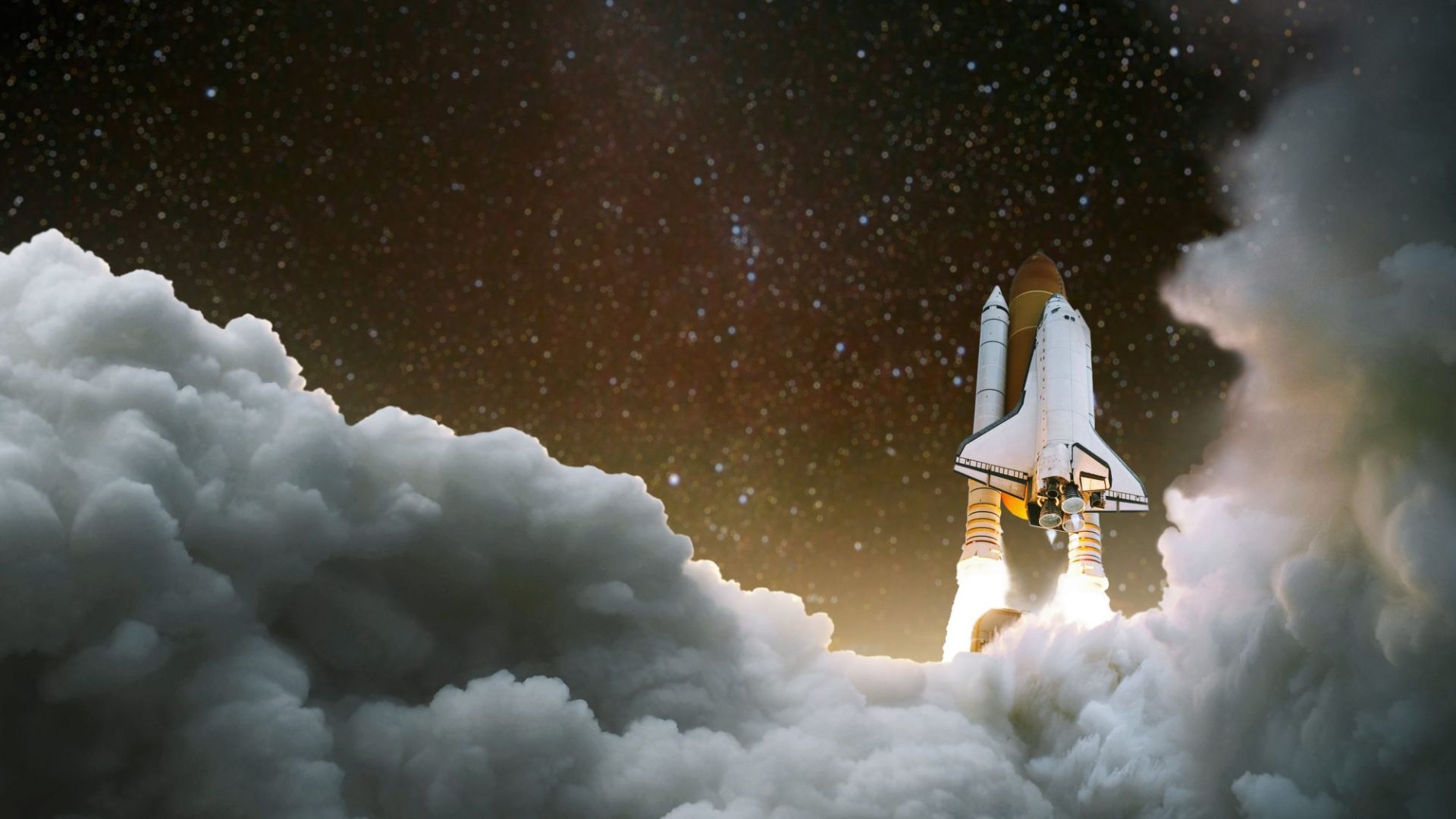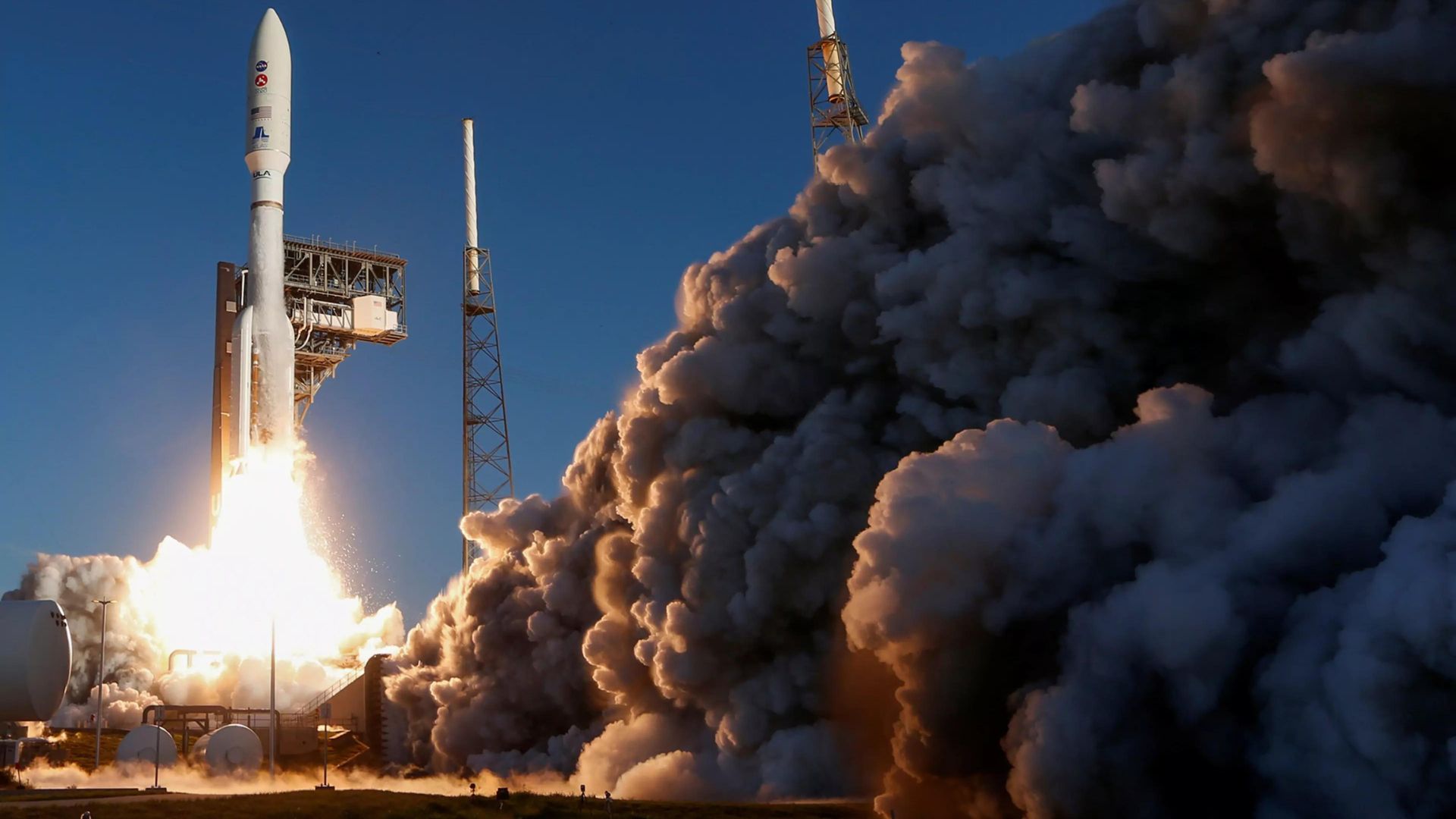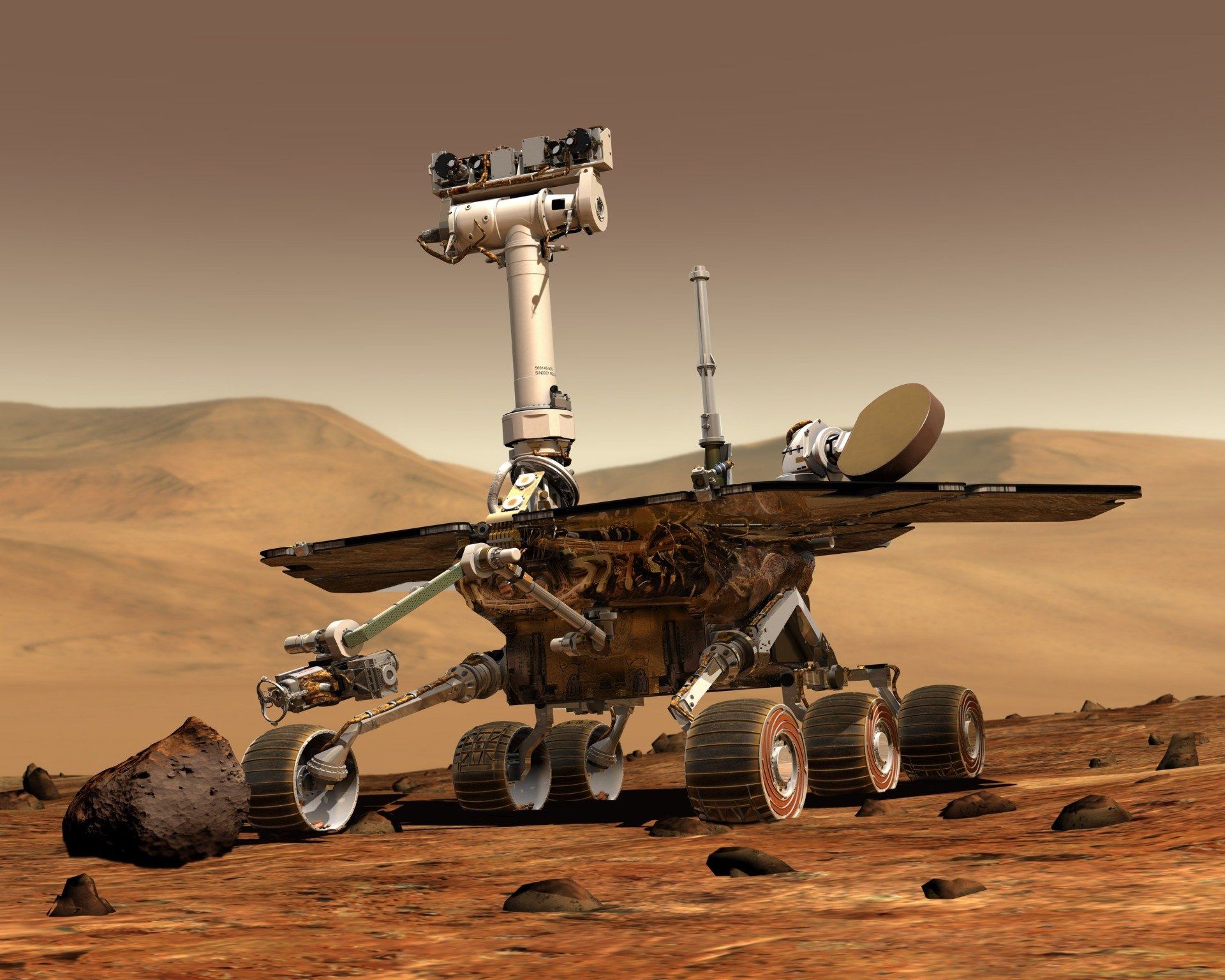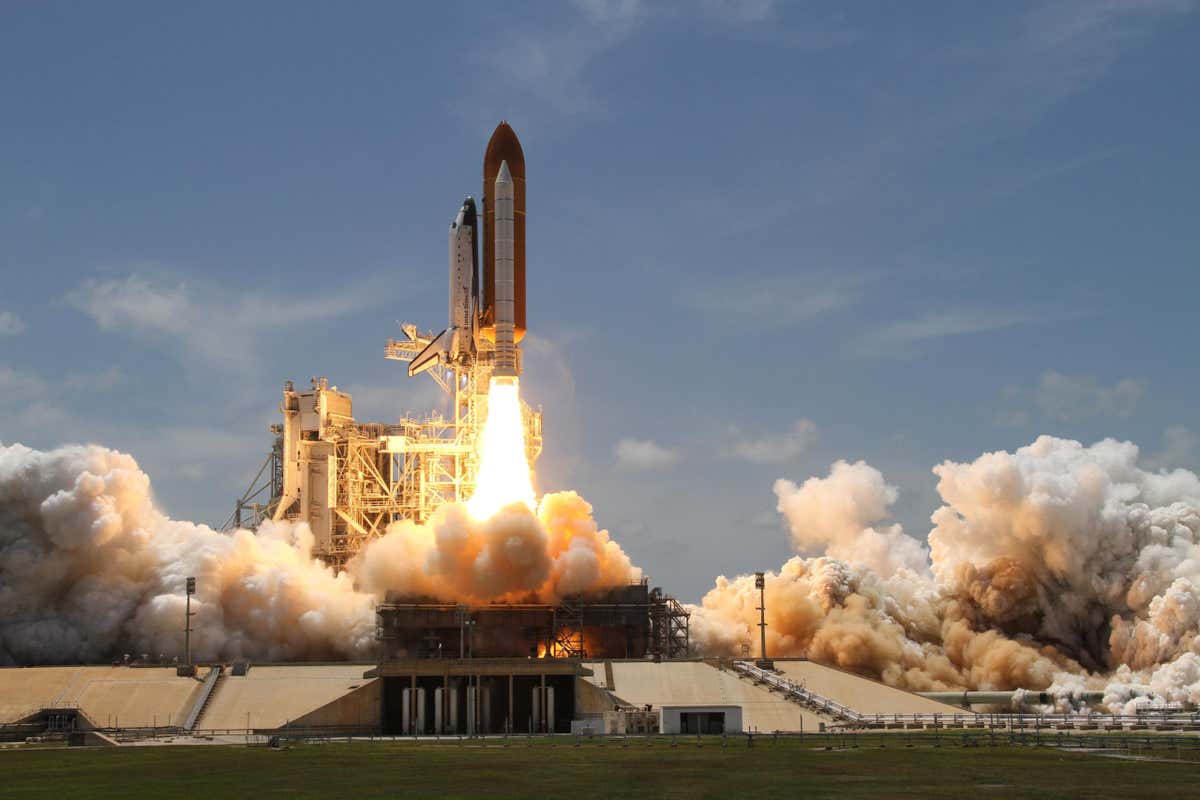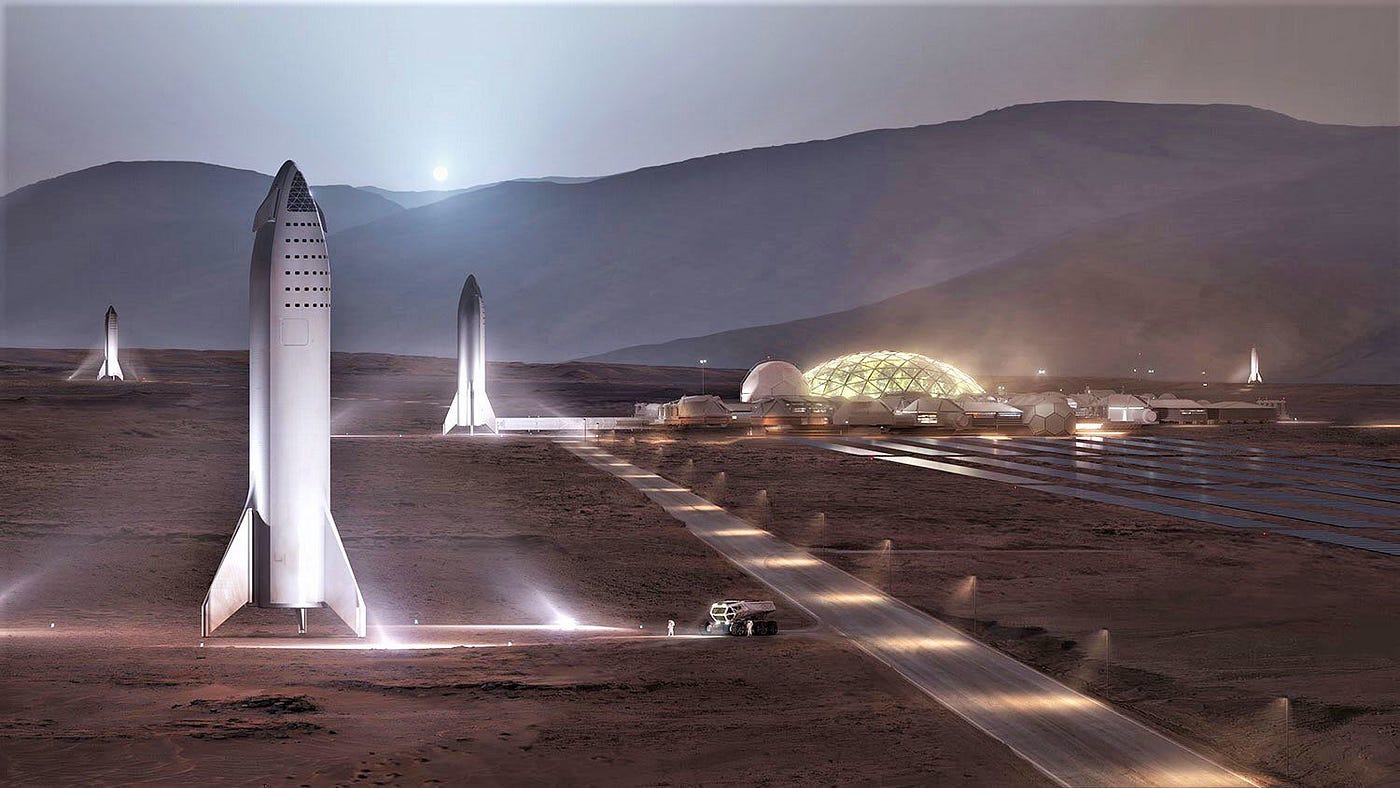The Future Of Space Exploration
The future of space exploration holds boundless possibilities as we embark on a journey to uncover the mysteries of the cosmos. In the coming years, the future of space exploration will see unprecedented advancements in technology and scientific discoveries.
Author:Xander OddityReviewer:Dr. Felix ChaosphereDec 01, 202324.7K Shares363.4K Views
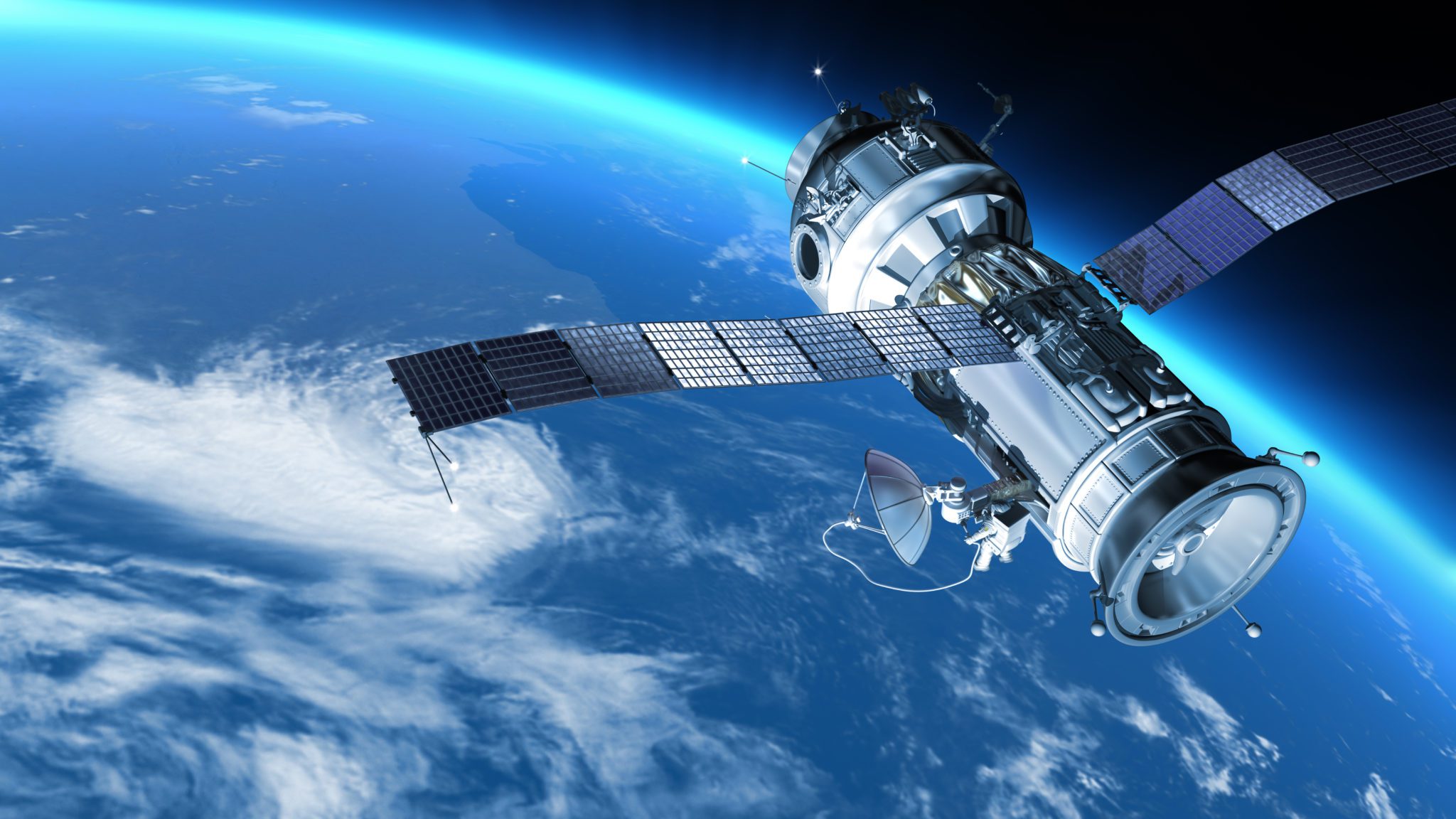
For generations, humanity has been utterly enthralled by its obsession with space. The pursuit of knowledge and the exploration of space has been going on for a very long time, from the time that ancient astronomers first looked up at the stars to the time that astronauts ventured beyond the atmosphere of our planet.
Telescopic exploration, as well as the physical exploration of space by robotic spacecraft and human spaceflight, are both part of the trajectory of the future of space exploration. The future of space travel has an incredible amount of promise and possibility due to the rapid advancement of technology and the expansion of scientific understanding.
According to the budget request for the next fiscal year, NASA is seeking over $27 billion to fund its missions in 2024.
As humanity continues to push forward into new territory, we will continue to face both great opportunities and challenging obstacles. In this article, we will delve into the exciting prospects of the future of space exploration and the difficulties that await humanity.
Importance Of Exploring Space For The Future Of Humanity
- Increasing Scientific Knowledge- Space exploration plays a pivotal role in augmenting our comprehension of the cosmos, including planetary systems and cosmic events, hence resulting in pioneering scientific findings.
- Driving Technological Advancements - Technological advancements having broad applications on Earth, such as environmental monitoring, telecommunication, and healthcare, are sparked by the problems of space missions.
- Economic and Industrial Growth- The space industry stimulates economic growth by opening up new markets and employment possibilities, especially in innovative industries.
- Promoting International Cooperation- International space missions foster international collaboration, which supports world peace and harmony.
- Understanding Environmental Changes - Understanding the environmental problems on Earth, such as climate change, can be gained from studying other worlds.
- Preserving Long-Term Existence- In addition to ensuring humanity's long-term existence, space exploration may provide answers to problems like resource shortage and overpopulation.
Benefits Of Space Exploration
The 20th-century Space Race caused a significant shift in the amount of money allocated to space research. The race between the Soviet Union and the United States to accomplish the first spaceflight propelled space exploration in the latter half of the 20th century.
National governments and the commercial sector are currently funding space exploration once more. This time, though, their goals are to use space's resources and save human life from calamitous catastrophes.
Colonize Outer Space
There has been a claim made that space colonization is a way to guarantee human civilization's survival in the event of a planetary catastrophe. Humans can spread out over other worlds thanks to colonization, which raises the probability that they will survive a planetary catastrophe.
The prospective acquisition of extra resources through space mining has the potential to enhance human capabilities and yield significant benefits for civilization.
By making use of these resources and relocating highly polluting companies to space, it may be possible to lower emissions on Earth and eventually discover cleaner energy sources. The main obstacles to space colonization are technological and financial ones.
In an effort to lower the total cost of space travel and, consequently, space colonization, several commercial enterprises are striving to improve the efficiency of space flight. SpaceX, having launched the reusable Falcon 9, has taken the lead in this movement for efficient exploration.
Space Research
Because of space's unique qualities, astronauts are able to carry out research that would not be possible on Earth, and scientists are able to learn more about Earth's natural environment from space.
The goal of research carried out onboard the International Space Station is to further human understanding of space and space exploration while also benefiting Earthly civilizations. Presently, NASA is doing biomedical research, material science, technological progress, and strategies to facilitate more space exploration aboard the International Space Station (ISS).
Astronauts are able to conduct medical research in microgravity and antigravity, which is not feasible on Earth. For instance, in order to maintain the robustness of the microparticles in the therapy solution, NASA's study on novel treatment options for complicated illnesses, such as Duchenne Muscular Dystrophy, requires the utilization of a microgravity environment.
Additionally, NASA has disclosed funding for research into the production of microbial vaccines and the microencapsulation of medications for more effective and targeted therapy delivery.
Crewed Space Missions
Commercial Crew Program Development
The goal of NASA's Commercial Crew Program, which is government-funded, is to make it easier for American and foreign astronauts to fly in privately run crew spacecraft to the International Space Station (ISS).
- Operational Contracts - In September 2014, contracts for astronaut transportation were awarded to SpaceX and Boeing.
- Scheduled Test Flights - 2019 saw the completion of test flights for the Dragon 2 and CST-100, with six ISS missions per firm from 2019 to 2024.
- Astronaut Selection- On August 3, 2018, the first batch of astronauts for these missions was revealed.
Spacex Starship Project
- Project Overview- A spaceship in development called SpaceX Starship is intended to be the second stage of a reusable launch vehicle.
- Design and Purpose- designed to be a long-haul passenger and freight transport.
- Launch Configuration- To be launched as part of a two-stage-to-orbit launch vehicle along with the Super Heavy, an extra booster stage.
Boeing Crew Test Flight
- The Mission's Goals - Launched atop the Atlas V rocket, this test will be the first crewed voyage to assess the Boeing Starliner crew capsule.
- Launch Timeline- The mission is scheduled for June 2021 and might last anywhere from two weeks to six months.
- Crew Composition- consists of three astronauts from NASA, including the first female member of an American spacecraft crew.
Boeing Starliner 1 Mission
- Mission Details- The first operational crewed mission of the Boeing Starliner, also marking the first reuse of the Starliner spacecraft.
- Launch Schedule - The Atlas V rocket is scheduled to launch by December 2021.
- Crew - Three are from NASA, and the other astronaut is probably an international partner.
The Gaganyaan Mission Of Isro
- Program Overview - A three-person crew module is part of the first Indian Human Spaceflight Programme.
- Spacecraft and Launcher- A 5.3-tonne crew module and a 2.9-tonne service module to be launched on the GSLV Mk III.
- Mission Plan- Featuring a parachute splashdown in the Bay of Bengal, the mission is intended to last up to seven days.
Overview Of Commercial Crew Capsule Development
- Program Goal- To offer economical, dependable, and safe astronaut transportation to and from the International Space Station.
- Leading Players - NASA has chosen SpaceX and Boeing as its principal contractors.
- Future Missions- NASA's Artemis Missions, which include an Orion spacecraft equipped with a Lockheed Martin crew capsule.
The Role Of Artificial Intelligence And Robotics In Space Exploration
Enhancing Spacecraft Autonomy And Decision-Making
Artificial intelligence (AI) and robotics have dramatically improved the autonomy of spacecraft, making it possible for these vehicles to carry out complicated tasks without the assistance of humans.
- Data Processing and Analysis- AI algorithms collect and analyze vast volumes of data from onboard sensors effectively, allowing for the identification of crucial information.
- Autonomous Navigation- Artificial intelligence technologies guide spaceships through intricate settings by modifying trajectories and navigating around obstacles.
- Predictive Maintenance - Artificial intelligence can forecast and diagnose possible system faults, which makes it easier to perform repairs and maintenance at the appropriate times.
When traveling to deep space, where there are considerable time delays in communicating with Earth, having this level of autonomy is essential to the success and safety of the mission.
Facilitating Unmanned Exploratory Missions
The exploration of inaccessible or hazardous regions in space has been greatly aided by robotic explorers that are controlled by artificial intelligence.
- Rover Missions on Mars- On Mars, artificial intelligence-operated rovers such as NASA's Perseverance and Curiosity have independently carried out geological surveys and tests.
- Probing Hostile Environments - Some regions are currently inaccessible to humans, such as the surface of Venus or the gas giants. Robotic missions have investigated these environments.
- Sample Collection and Analysis- Samples of the soil and atmosphere may be collected and analyzed by robots autonomously, giving significant scientific data.
Improving Human-Robot Collaboration
Not only are AI and robots displacing people in potentially dangerous areas, but they are also enhancing humans' skills in space.
- Assisting Astronauts - Robotic assistants powered by AI assist astronauts with everyday work, scientific investigations, and upkeep of the space station.
- Enhanced Communication- Even with delays, artificial intelligence technologies make communication between astronauts and mission control much more effective.
- Emergency Response- Robots can conduct hazardous work in emergencies, hence lowering the dangers faced by human crew members.
Both human dexterity and robotic accuracy are required for complicated activities such as the building and maintenance of space stations; thus, this partnership is vital for these tasks.
Limitations With Deep Space Exploration
Technical, practical, astronomical, and human limits limit deep space travel and crewed and uncrewed space exploration. Human-made probes have journeyed as far as Voyager 1, 23.61 billion km (14.67 billion mi), 157.8 AU from Earth. The closest star is 4.24 light years distant, 268142.2 AU.
Technical Constraints
Space-faring technology, including propulsion, navigation, supplies, and storage, limits human space travel in the near future.
Distances
The distance between Earth and the closest stars is astronomical, making space travel difficult. At 157,100 mph (252,800 km/h), the Helios 2 probe would reach Proxima Centauri in 18,000 years, significantly longer than a human lifetime and requiring quicker transit than currently possible. The Oberth effect—the Sun's gravity and the spacecraft's propulsion system—accelerated it to this speed. Voyager 1's 17 km/s escape velocity is the fastest leaving the Solar System.
Power And Fuel
Since space has no friction, liftoff, and beginning momentum are the biggest challenges in propulsion. Chemical fuels such as liquid hydrogen and oxidizer (Space Shuttle Main Engine), plasma, or nanoparticle fuels are utilized, planned, or designed depending on mission requirements, including distance, weight, and flight time.
Longshot Fusion Engine Schematic
Nuclear fusion (Project Daedalus) and nuclear pulse propulsion (Project Longshot) were theoretically studied over 60 years ago, but NASA has since abandoned actual study. The theoretical Alcubierre drive offers a mathematical answer for “faster-than-light” travel, but it requires Jupiter's mass-energy and technological problems.
Resources And Sustenance
Food storage and replenishment issues are significant for lengthy crewed missions. NASA estimates that a 3-year Mars trip would require 24 thousand pounds (11 t) of food, mostly precooked, dried 1.5-pound (0.68 kg) meals.
Since there would be no refrigeration, fresh vegetables would only be available early in the voyage. Due to water's considerable weight, the International Space Station (ISS) limits per-person water usage to 11 liters (2.9 US gal) per day, compared to the typical American's 132.
To optimize storage, recycling, reusing, and producing have been done for replenishment. Fuel cells can create water from hydrogen and oxygen, and microgravity vegetable cultivation is being studied.
The ISS's "Veggie plant growth system" has grown lettuce, which the crew has eaten, even though large-scale plantation is unfeasible because of pollination, long growth times, and inefficient planting cushions.
The 2030 Vision For Space Exploration
The vision for space exploration is changing quickly as the 2030s drew near, propelled by advancements in technology, global cooperation, and a resurgence of enthusiasm for space travel.
Unprecedented advancements in robotic and human space missions are expected to be made this decade, ushering in a new age in our understanding of and exploration of the cosmos.
Major Milestones And Goal
The return of humans to the Moon is one of the most eagerly awaited milestones of the 2030s. By the early 2030s, initiatives like NASA's Artemis program want to place the first woman and the next man on the moon.
By the end of the decade, this project seeks to create a sustained human presence on the Moon in addition to acting as a springboard for more ambitious missions. This lunar outpost will serve as an essential testing ground for the living arrangements and technology needed for even more complex missions, such as manned Mars exploration.
In addition, other space organizations, including Roscosmos and the European Space Agency (ESA), are making contributions to lunar exploration.
These agencies are concentrating on topics like scientific research, habitat building, and the usage of lunar resources. This cooperative strategy represents a change toward a more cohesive worldwide space exploration endeavor.
Emerging Technologies And Breakthroughs
At the core of the 2030 ambition for space exploration is technological progress. One field experiencing significant progress is propulsion technology, where initiatives are being undertaken to investigate quicker and more effective methods of space travel, such as ion drives and nuclear thermal propulsion.
By significantly cutting down on journey time, these technologies may enable new avenues for exploration, including trips to Mars and beyond.
Technology for space habitats is another important field. Long-term missions need the development of dependable life support systems, radiation shielding, and sustained food and water delivery systems. These technologies might come to fruition in the 2030s with functioning lunar bases and Mars housing prototypes.
Innovations in artificial intelligence (AI) and robotics are also revolutionizing space exploration. Advanced artificial intelligence (AI)-capable autonomous rovers, drones, and orbiters are anticipated to perform complicated tasks—from scientific research to human mission scouting—more effectively and safely.
High standards and state-of-the-art technology advancements characterize the space exploration concept of 2030. It symbolizes a team effort to discover our position in the cosmos and push the boundaries of human knowledge and potential. The next ten years look to be a time of great potential, challenge, and discovery as we continue to explore space.
Predictions For The Future Of Space Exploration For The Public
Space Exploration Will Be A Mix Of Public And Private Money
Look at even the missions that NASA is sending back to the moon. You will see that a variety of different commercial space corporations are participating in that process. This includes Axiom Space, for example, who are manufacturing the spacesuits that will be used by NASA astronauts when they foot on the moon again.
Those spacesuits will be used during the next lunar landing. Therefore, it is thrilling to observe how the mentality of space is shifting, as well as the efforts of commercial organizations such as Axiom Space, which plans to create the first commercial space station first docked to the International Space Station (ISS), but then to undock before ISS is decommissioned.
More People Will Be Able To Go To Space
Some of it will require some amount of time until it is no longer cost-prohibitive, but the fact that we are taking those early steps is incredibly crucial at this point.
When one considers the history of commercial aviation, how it came to be, and the evolution of the process that led to its establishment, one realizes that in the beginning, only a select few individuals were able to participate in the process. Still, as time went on, more and more people joined in. It is now something that is generally accepted.
The Challenges Of Space Exploration
Immense Distances And Hostile Environments
The extreme distance and harsh surroundings involved in space travel make it one of the most challenging tasks. Even the nearest celestial planets need a significant investment of time and energy to reach.
Extreme temperatures, vacuum, and zero gravity are some of the characteristics of space travel that make the environment hostile to human existence. To make long-duration space trips possible, these considerations need the development of sophisticated propulsion systems and life support technology.
Human Health Risks
Astronauts who spend extended periods in space run serious health risks. Among these is high-level cosmic radiation exposure, which raises the chance of developing cancer, among other major health problems.
The effects of prolonged microgravity exposure can extend to muscle mass and bone density. One of the main areas of focus and investigation is ensuring the physical and mental health of astronauts during prolonged missions.
Technical Complexities Of Robotic Missions
Robotic missions have their own set of difficulties even if they remove the threat to human life. Technical challenges for these missions include the requirement for autonomous operation and navigation in unpredictably changing surroundings. Making decisions and controlling remotely are made more difficult by the communication lag between Earth and far-off spacecraft.
Ethical And Planetary Protection Considerations
The importance of ethical questions grows as we explore space. This involves preventing Earth-based life forms from contaminating planets and other celestial bodies.
The goal of planetary protection is to safeguard other planets' integrity so that they can be investigated further and studied scientifically. Making sure that our exploration efforts don't negatively impact these habitats is a significant worry as we travel farther into space.
Space exploration brings tremendous hurdles in addition to countless chances for growth and discovery. Innovative technology, thorough scientific investigation, and a careful consideration of the moral ramifications of human activity in space are all necessary to overcome these obstacles.
The Future Of Space Exploration - FAQs
What Does Space Tourism Hold For The Future?
The demand for space travel is increasing, even if the sector is still in its infancy. From 2023 to 2030, it is predicted to rise at an annual rate of 40.2%.
Why Space Exploration Is The Future?
We are able to examine Earth and the solar system from a new viewpoint thanks to space travel.
Who Explored Space First?
The first human in space was Soviet astronaut Yuri Gagarin. During the 108-minute trip, his spacecraft, Vostok 1, circled the Earth at a speed of 27,400 kilometers per hour. Vostok was reentering under computer control.
Nutshell
In a nutshell, the future of space exploration is bright and is essential to the advancement of human knowledge, technology, and international collaboration. In addition to solving urgent issues on Earth, we are able to unravel the secrets of space and motivate a new generation of thinkers and doers by reaching for the stars.
Beyond just pursuing scientific knowledge, space exploration is a uniting project that cuts across boundaries and promotes a feeling of shared humanity and duty. The exploration of the last frontier serves as a monument to our creativity, tenacity, and the never-ending search for knowledge of our role in the cosmos as we move ahead.
Jump to
Importance Of Exploring Space For The Future Of Humanity
Benefits Of Space Exploration
Crewed Space Missions
The Role Of Artificial Intelligence And Robotics In Space Exploration
Limitations With Deep Space Exploration
The 2030 Vision For Space Exploration
Predictions For The Future Of Space Exploration For The Public
The Challenges Of Space Exploration
The Future Of Space Exploration - FAQs
Nutshell

Xander Oddity
Author
Xander Oddity, an eccentric and intrepid news reporter, is a master of unearthing the strange and bizarre. With an insatiable curiosity for the unconventional, Xander ventures into the depths of the unknown, fearlessly pursuing stories that defy conventional explanation. Armed with a vast reservoir of knowledge and experience in the realm of conspiracies, Xander is a seasoned investigator of the extraordinary.
Throughout his illustrious career, Xander has built a reputation for delving into the shadows of secrecy and unraveling the enigmatic. With an unyielding determination and an unwavering belief in the power of the bizarre, Xander strives to shed light on the unexplained and challenge the boundaries of conventional wisdom. In his pursuit of the truth, Xander continues to inspire others to question the world around them and embrace the unexpected.

Dr. Felix Chaosphere
Reviewer
Dr. Felix Chaosphere, a renowned and eccentric psychiatrist, is a master of unraveling the complexities of the human mind. With his wild and untamed hair, he embodies the essence of a brilliant but unconventional thinker. As a sexologist, he fearlessly delves into the depths of human desire and intimacy, unearthing hidden truths and challenging societal norms.
Beyond his professional expertise, Dr. Chaosphere is also a celebrated author, renowned for his provocative and thought-provoking literary works. His written words mirror the enigmatic nature of his persona, inviting readers to explore the labyrinthine corridors of the human psyche.
With his indomitable spirit and insatiable curiosity, Dr. Chaosphere continues to push boundaries, challenging society's preconceived notions and inspiring others to embrace their own inner tumult.
Latest Articles
Popular Articles
